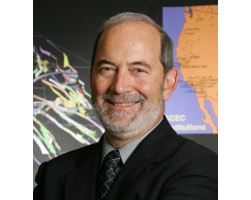
Thomas Jordon, rofessor of Earth Sciences at University of Southern California and the Director of the Southern California Earthquake Center
In this TACC podcast, the Thomas Jordan from the University of Southern California describes how he uses the computational resources of XSEDE, the Extreme Science and Engineering Discovery Environment, to model earthquakes and help reduce their risk to life and property. Dr. Jordan was invited to speak at SC15 on the Societal Impact of Earthquake Simulations at Extreme Scale.
“One thing people need to understand is we need a lot of supercomputer time in order to be able to do these calculations. Some of our simulation models that are based on the simulation of earthquake physics can take hundreds of millions of hours of computer time to generate. These are very complex system-level calculations. They’re of the similar complexity of trying to calculate what Earth’s climate is going to be like in 50 years because of human activities and CO2 charging of the atmosphere. It’s a similar scale of problem. These problems that deal with natural hazards and the complexity of the Earth system really require very large computers to be able to simulate that activity. We’re frankly looking forward to the day when computers are ten times or a hundred times or more faster than they are today.”



